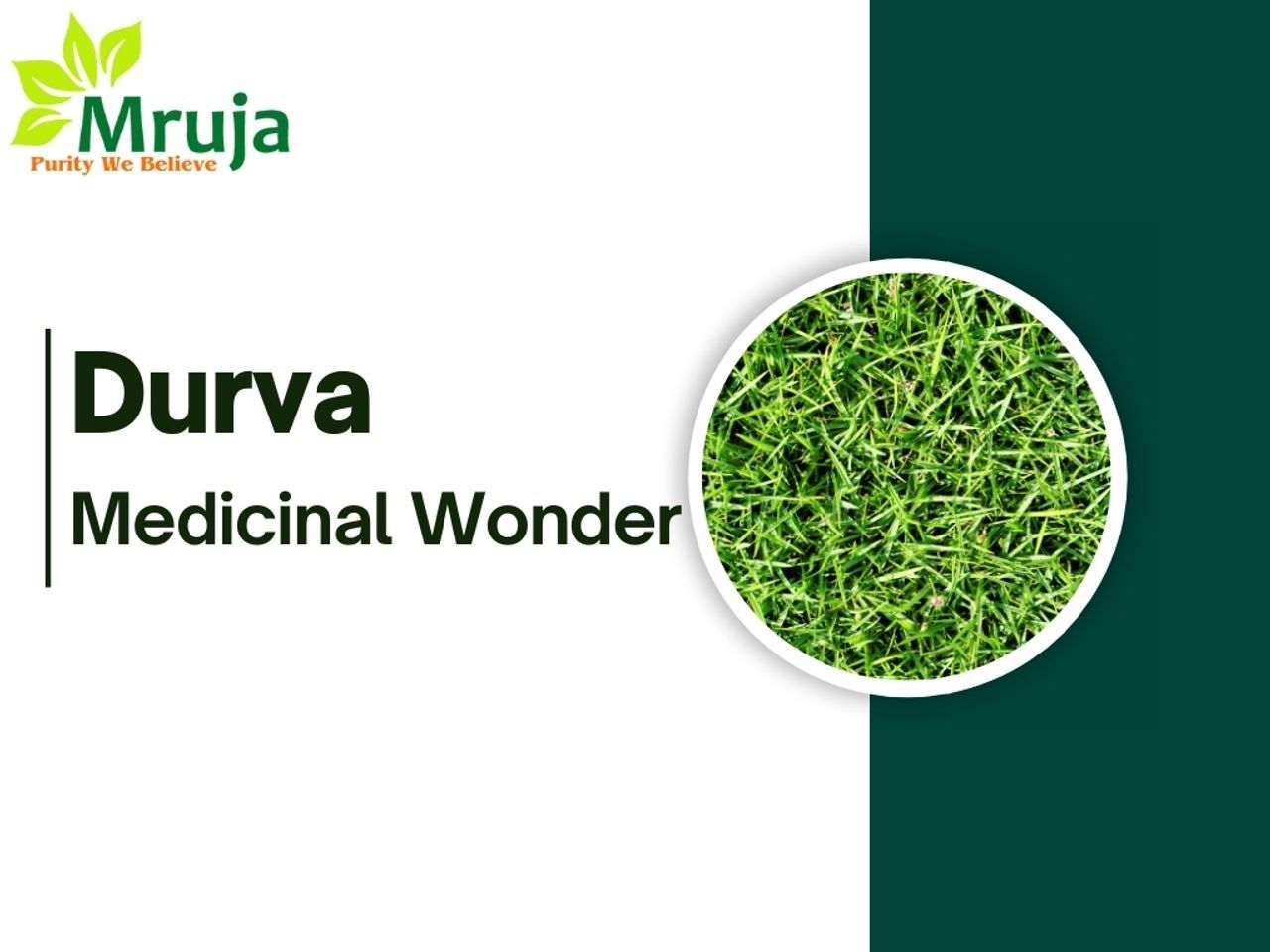Durva: Ayurvedic and Modern Pharmacotherapeutic Insights

Durva (Cynodon dactylon): A Comprehensive Review of Ayurvedic and Modern Pharmacotherapeutic Insights
Abstract
Durva (Cynodon dactylon), commonly known as Bermuda grass, holds a revered place in Ayurveda and modern herbal medicine due to its wide-ranging therapeutic benefits. Ayurvedic texts describe its hemostatic, cooling, and anti-inflammatory properties, while modern pharmacological research has confirmed its antimicrobial, antioxidant, anti-diabetic, and hepatoprotective effects. This article explores the Ayurvedic significance, phytochemical constituents, and modern therapeutic potential of Durva, providing a comprehensive understanding of its medicinal value.
Introduction
Durva (Cynodon dactylon), a perennial grass belonging to the Poaceae family, is extensively used in Ayurvedic medicine. It is also widely recognized in religious rituals and is often offered to Lord Ganesha in Hindu traditions. In Ayurveda, it is classified as Sheeta (cooling), Stambhana (astringent), and Rakta sthambhak (hemostatic). Modern studies have validated several traditional claims by identifying various bioactive compounds responsible for its pharmacological activities.
Ayurvedic Perspective on Durva
Rasa, Guna, Veerya, Vipaka
- Rasa (Taste): Madhura (sweet), Kashaya (astringent)
- Guna (Qualities): Laghu (light), Ruksha (dry)
- Veerya (Potency): Sheeta (cooling)
- Vipaka (Post-digestive effect): Madhura (sweet)
Therapeutic Indications in Ayurveda
- Raktapitta (Bleeding disorders): Used for its styptic and cooling properties in conditions like epistaxis and excessive menstrual bleeding.
- Pitta Prakopa (Hyperacidity and burning sensations): Acts as a coolant and pacifies aggravated Pitta Dosha.
- Vrana Ropana (Wound healing): Applied topically for cuts, burns, and ulcers.
- Mutrakrichra (Dysuria): Known to have diuretic properties, promoting healthy urinary function.
- Jvara (Fever): Used as an antipyretic in febrile conditions.
Phytochemical Composition
Modern phytochemical analysis reveals that Durva contains several bioactive compounds responsible for its therapeutic properties:
- Flavonoids: Apigenin, luteolin – known for antioxidant and anti-inflammatory effects.
- Alkaloids: Contribute to antimicrobial and immunomodulatory effects.
- Glycosides: Exhibit anti-diabetic and hepatoprotective actions.
- Tannins: Impart astringent properties, aiding in wound healing and diarrhea management.
- Essential oils: Contain terpenes, which have antimicrobial and anti-inflammatory potential.
Modern Pharmacological Activities
- Hemostatic and Wound Healing Effects:
- Studies confirm its styptic nature, supporting its traditional use in controlling bleeding and promoting tissue repair.
- Antimicrobial and Antiviral Activity:
- Durva exhibits broad-spectrum antibacterial and antiviral activity against Staphylococcus aureus, E. coli, and herpes simplex virus.
- Antioxidant and Hepatoprotective Effects:
- Rich in flavonoids, it scavenges free radicals, protecting the liver from oxidative damage.
- Anti-diabetic Activity:
- Research shows its ability to regulate blood glucose levels by enhancing insulin sensitivity.
- Anti-inflammatory and Analgesic Properties:
- Helps in reducing inflammation and pain, making it beneficial for arthritis and skin disorders.
- Immunomodulatory Effects:
- Boosts immunity by enhancing the activity of macrophages and T-cells.
Clinical Applications and Dosage
- Fresh Juice (Swarasa): 10-20 ml daily, mixed with honey or water.
- Powder (Churna): 3-5 g per day.
- Durva Kalpa: 3-5 gm with milk or water
- External Application: Paste or decoction for wound healing and skin diseases.
- Kwath (Decoction): Used in urinary disorders and fevers.
Conclusion
Durva (Cynodon dactylon) is a remarkable herb with significant therapeutic potential in both Ayurveda and modern medicine. Its hemostatic, anti-inflammatory, antioxidant, and antimicrobial properties make it a valuable addition to integrative healthcare. Further clinical research is warranted to explore its full potential and applications in modern pharmacotherapeutics.
References
- Charaka Samhita, Sushruta Samhita - Ayurvedic classical texts.
- Singh, R. et al. (2012). Pharmacological properties of Cynodon dactylon: A Review. Journal of Medicinal Plants Research.
- Prakash, O. et al. (2018). Therapeutic potential of Cynodon dactylon in metabolic disorders. International Journal of Ayurveda Research.
- Sharma, P. et al. (2020). Antioxidant and hepatoprotective effects of Cynodon dactylon. Journal of Ethnopharmacology.



